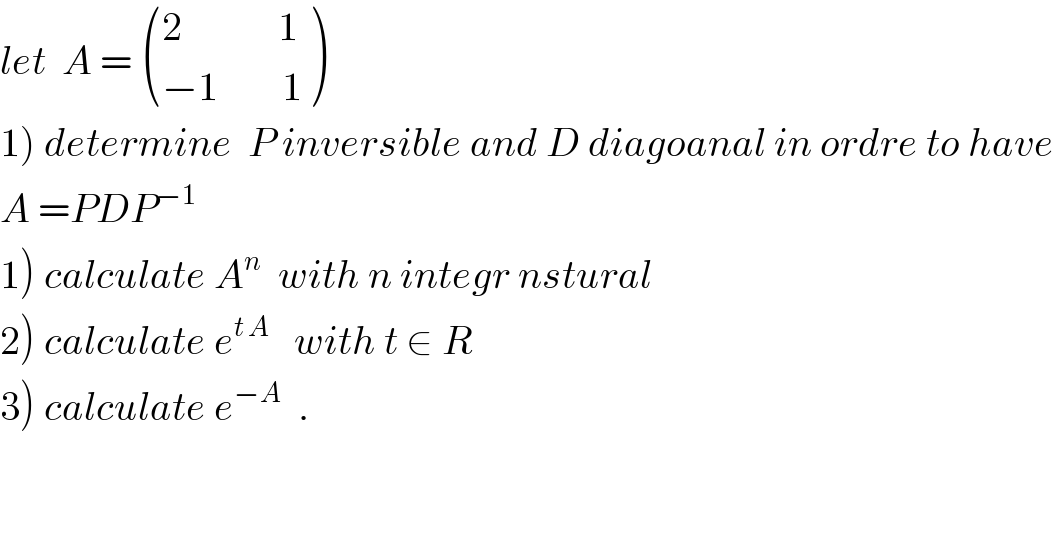
Question Number 53775 by maxmathsup by imad last updated on 25/Jan/19

$${let}\:\:{A}\:=\:\begin{pmatrix}{\mathrm{2}\:\:\:\:\:\:\:\:\:\:\:\:\mathrm{1}}\\{−\mathrm{1}\:\:\:\:\:\:\:\:\mathrm{1}}\end{pmatrix} \\ $$$$\left.\mathrm{1}\right)\:{determine}\:\:{P}\:{inversible}\:{and}\:{D}\:{diagoanal}\:{in}\:{ordre}\:{to}\:{have} \\ $$$${A}\:={PDP}^{−\mathrm{1}} \\ $$$$\left.\mathrm{1}\right)\:{calculate}\:{A}^{{n}} \:\:{with}\:{n}\:{integr}\:{nstural} \\ $$$$\left.\mathrm{2}\right)\:{calculate}\:{e}^{{t}\:{A}} \:\:\:{with}\:{t}\:\in\:{R}\:\: \\ $$$$\left.\mathrm{3}\right)\:{calculate}\:{e}^{−{A}} \:\:. \\ $$
